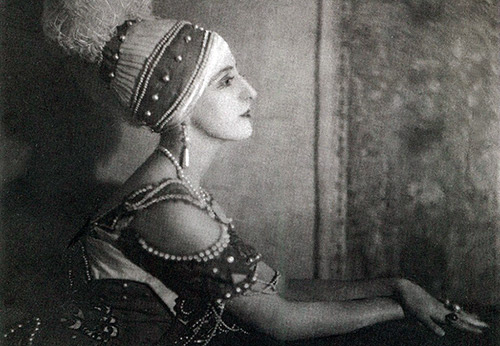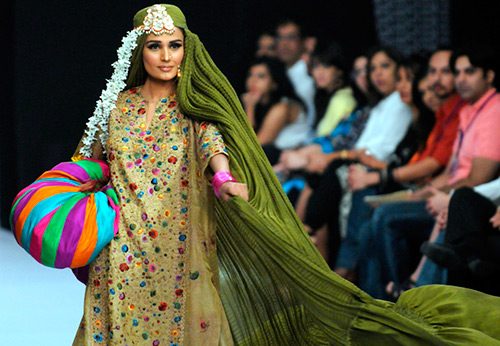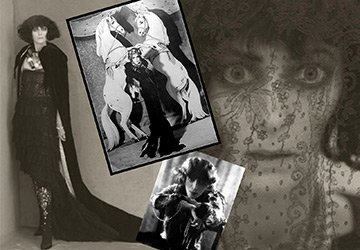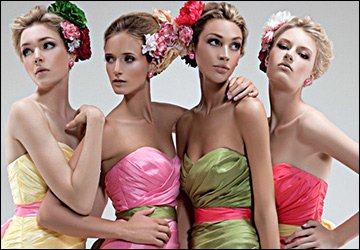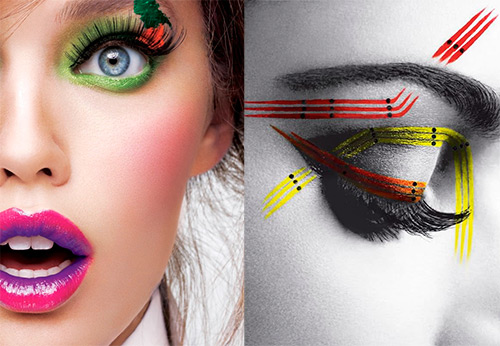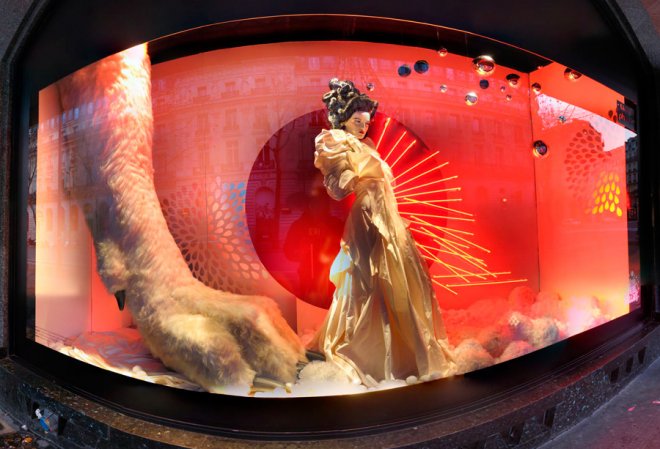Fashion history
Lev Samoilovich Bakst - biography and paintings
Fashion historians claim that in the early 1920s, Lev Samoilovich Bakst became a trendsetter in Paris. It was at this time that the artists of the Russian Ballet illuminated the theatrical sets and costumes with bright colors, and undoubtedly transferred their influence from the stage to the windows of Parisian shops.
Transparent bloomers of harem odalisks, colorful robes, aigrets and turbans, draperies of oriental palaces and harem pillows, bright sparkling stones and strands of pearls - all this exotic amazed the public's imagination. Therefore, no one remained indifferent to new trends.
Color contrasts and brightness of colors ran counter to the ideas of beauty that were preferred in the Art Nouveau style. Lev Bakst became a decorator for many performances of the Russian ballet, and each of them had tremendous success. Oriental exoticism flooded into Parisian shops, dissolving everything around with its colorful patterns and unusual color combinations of costumes, repeating those created by Lev Bakst, who had a huge influence on fashion in the early twentieth century.

Bakst Lev Samoilovich (1866-1924) - artist and set designer was born in Grodno in 1866. His real name and surname is Rosenberg Leib-Khaim Izrailevich. It can be said about him that the artist's talent manifested itself in him since childhood.
He possessed not only the ability to draw, but also felt confident in his talent, knew how to feel the time in which he lived. And therefore, when he entered the Academy of Arts as a volunteer, after a while he left this institution, disillusioned with academic training. Bakst began painting on his own, while moonlighting as an illustrator for children's books and magazines.
The artist first presented his work at an exhibition in 1889, choosing the pseudonym Baxter, an abbreviated surname of his maternal grandmother.
In the early 1890s, he repeatedly exhibited his landscape works in the Society of Watercolorists, and in the mid-1890s he joined a circle of artists united around S. Diaghilev and A. Benois. Here in the magazine "World of Art" he gained fame for his graphic works, bright colors, architectural perspectives and draperies. He was the most active among the entire community of the "World of Arts".

Since 1909, Bakst has already worked in the performances of the Russian Ballet, and in the summer of 1911, a personal exhibition of the artist opened in the Louvre, which included about 70 works. The exhibition was a tremendous success. His fame grew not only in Paris, his paintings were bought up almost instantly by various European museums, but he bitterly admitted that he wanted recognition in Russia. However, it was in Paris, the capital of world fashion, that Bakst deserved great success.
In 1909, the world famous artist was expelled from St. Petersburg as a Jew who, according to the law, did not have the right to live there. This explains his permanent residence in Europe. Only after he was elected an academician did he receive this right. The artist was elected a member of the Imperial St. Petersburg Academy of Arts in 1914. And in the same year he visited Russia, and returning to Europe, he no longer managed to see his homeland - war, then revolution ...

In 1909-1914 Bakst designed more than ten performances. His works include the ballets Tamar, Daphnis and Chloe, The Blue God, Cleopatra, Narcissus, Scheherazade, and The Vision of a Rose. All of them are a confirmation of Lev Bakst's talent, and at the same time, the glory of Russian decorative art.
Designing the performances, he clearly imagined the costume in the movement of the actor, in conjunction with the background of the scenery, thereby contributing to the identification of the plasticity of the actor's body.
In the ballet "Scheherazade" Bakst dressed the dancers in harem trousers and turbans decorated with egrets, took off their corsets ... quarter of a century, by the way, described in Remarque's novel "Arc de Triomphe".
Lev Bakst and Mikhail Fokin were accused at that time by critics - moralists, but the audience literally burst into performances. The scandalous fame brought success to many ballet performances, especially Scheherazade.
Many of the striking contrasts that Bakst proposed were met with enthusiasm. Motifs from Scheherazade were used in fashion houses. Paul Poiret, the Callot sisters, Paquin, Lucille fell under the influence of the Oriental transformation. Paul Poiret created his models with tunic skirts and harem pants from translucent muslin.

At the Paken House, where Bakst was invited to collaborate, the artist created a whole series of sketches for evening and day dresses. Poiret is one of those who constantly found new and new ideas for themselves, using them not only in clothes, but also in the interior of houses and apartments. For many years, fringed lampshades and sofa cushions remained as decorative elements in everyday life, even among the simplest inhabitants, once migrated from the stage of the Russian Ballet. Lev Bakst remained one of the most fashionable artists in Paris until First world war.
Costumes for "Minuet", "Dying Swan" and "Musical Moment" Bakst designed for Pavlova's troupe, and for Ida Rubinstein he was one of the leading decorators. Bakst amazed the audience everywhere with his imagination and refined sophistication of costumes.
Everyone in Paris knew what "Cleopatra" or "Scheherazade" was - from music lovers to a taxi driver and a concierge. The doors of the largest theaters in Europe opened before Bakst. Famous couturiers of that time began to look for cooperation with them.
Lev Bakst and fashion


The bright colors of the costumes and scenery in the performances designed by Bakst produced a truly hypnotic effect on the audience. After the closure of the Russian seasons, textile manufacturers began to rename their products, calling them: "Scheherazade", "Almea", "Odalisque".
Bakst has earned a reputation not only as a talented stage designer, he also developed sketches for famous clients. They were princesses and ballerinas of the Bolshoi Theater.
Bakst was not only a decorator and fashion designer, he was fond of photography, became a designer of jewelry, handbags and even wigs, and at the end of his life became interested in cinema. Lev Bakst possessed a multifaceted talent, which he showed in many areas of art.
In painting, he tried himself as a portrait and landscape painter. His brushes include portraits of Zinaida Gippius, Vasily Rozanov, Alexander Benois and a portrait of S. Diaghilev - "Portrait of Sergei Pavlovich Diaghilev with a nanny", recognized as the pinnacle of portraiture.
The portrait was painted in 1906, when the St. Petersburg period of Diaghilev's activity was coming to an end. Bakst managed to penetrate into the essence of his character, to create that complex and multifaceted image that Sergei Pavlovich possessed.
In addition, Bakst possessed a gift for writing, which manifested itself in his autobiographical novel Cruel First Love, where the artist talks about his feelings for the actress Marcel Josse, for whom he left for Paris. However, he married the daughter of Pavel Tretyakov, Lyubov Gritsenko, whose life together lasted only seven years.

In his works Bakst was able to express that time. In the last years of his life Bakst designed the performances of the theaters "Grand Opera", "Michel", the troupe of Ida Rubinstein, continued to paint portraits.
But let's return to the stage of the Russian Ballet, on the design of the performances of which many people worked. The performances of the Russian Ballet have created a truly stunning theatrical spectacle. They achieved the integrity and unity of painting, music, dance and literature. This was facilitated by artists, choreographers, composers, and, of course, the actors themselves.
Artists, one might say, for the first time began to depict a sketch of a costume and an actor in it, in motion, thus contributing to the work of the choreographer. Therefore, each participant in the production worked on the entire performance as a whole. Subsequently, Benoit recalled: "ballet ... the most eloquent of the spectacles ... In it you can achieve ... such harmony, such beauty, such a meaning that is inaccessible even to drama." Therefore, for many years, prominent figures of culture and art of Europe spoke enthusiastically about the performances of the Russian ballet.

Bakst's colors and color combinations stunned the audience and had a huge impact on the fashion of the twentieth century: blue and purple, red and yellow, orange and green. The fireworks of colors of the Russian Ballet made us look at the world with different eyes. Prince Pyotr Lieven wrote in his book The Birth of Russian Ballet: “The influence of Russian ballet was felt far beyond the theater. Fashion creators in Paris included it in their creations ... "
In 1909 Bakst's name became world famous. The theatrical artist suddenly became a trendsetter in Paris. The doors of the best theaters in Europe opened before him, famous couturiers were looking for cooperation with him. Refined eroticism and luxury of costumes drove the whole Paris crazy. How did Bakst so influence the public? Textile patterns and bold colors.

The artist drew his ideas from his own fantasies and the inexhaustible storehouse of his erudition. Moreover, Bakst used motifs and ornaments that could be seen in the Acropolis Museums in Athens or on the frescoes of the Palace of Knossos in Crete. Bakst saw all the originals with his own eyes during a trip to Greece and Crete in 1907.
Bakst's influence on fashion, including fabric ornament, began in 1910. This year he signed a contract with Paul Poiret. From 1912 to 1915, the artist worked in collaboration with the house of Jeanne Paquin. When he drew sketches, he simply drew the texture of the fabric of a given model. From his drawings, one could see where and what kind of fabric is required - woven, with embroidery or applique. The French textile industry reacted quickly to the demands of the times.
L.S. Bakst had a tremendous influence on textile ornament. The success of the performances designed by Bakst caused a craze for the East, and fabrics "in Bakst's style" appeared. Shop windows in Paris were decorated like scenes from performances of the Russian Ballet: scattered pillows and ottomans, bright color combinations, where there were blue and green, and pink and orange - all this aroused interest in the appearance of fabrics.
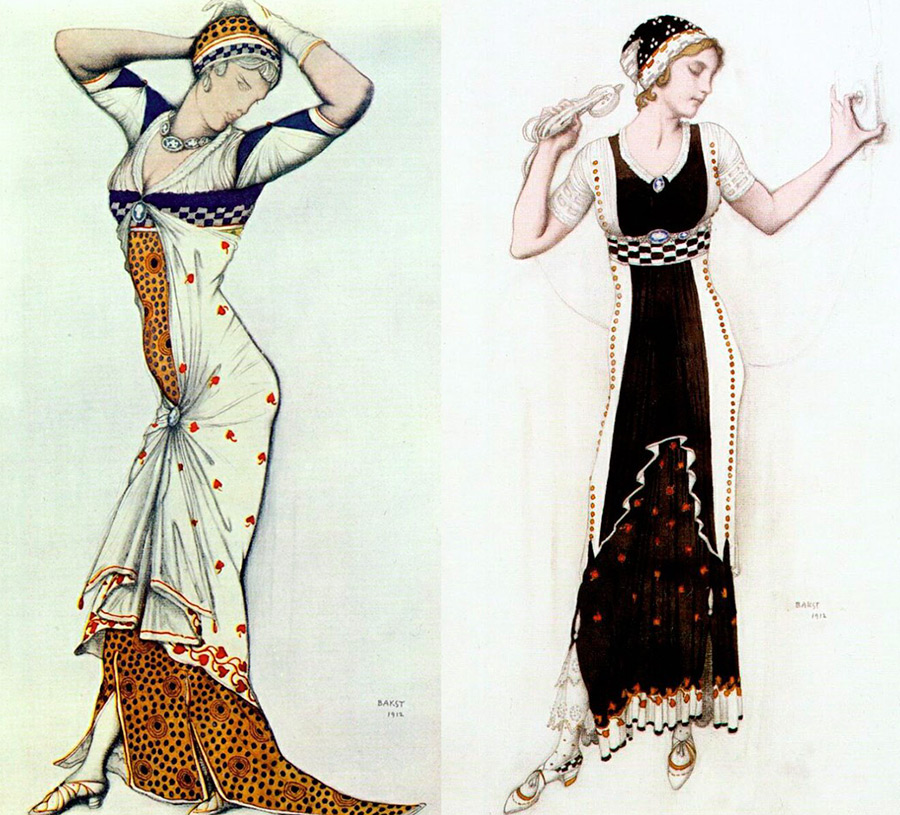
In years First world war there is a decline in the theatrical creativity of the artist. European theaters are closing. At this time Bakst worked for the troupe of Anna Pavlova and S.P. Diaghilev.
In 1922 Bakst visited America, where he met American manufacturers. By this time, New York, and the whole of America, already knew Bakst, because in 1913 Anna Pavlova performed the ballet Eastern Fantasy there, and in 1916, the ballet The Sleeping Beauty. In addition, the Diaghilev troupe visited America in 1916-1917; its repertoire included 14 ballets, eight of which were designed by Bakst.
During his second visit to America in early 1924, Bakst tried to strengthen cooperation with American textile manufacturers. In America, he sold about 100 sketches to textile manufacturers.
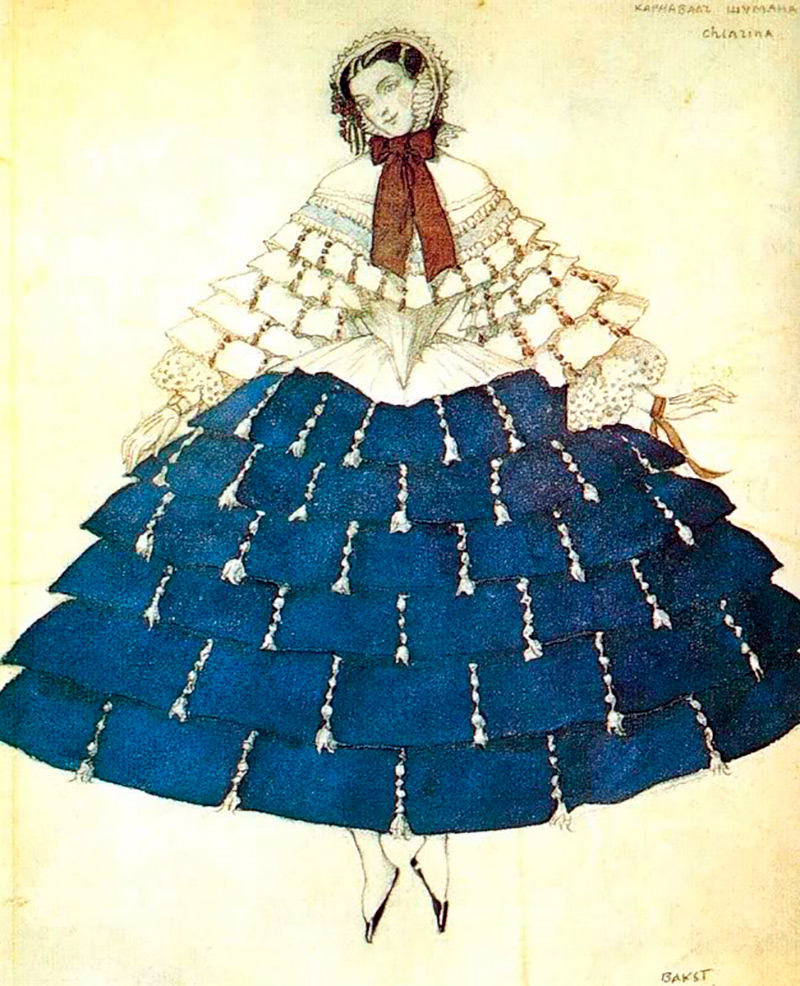
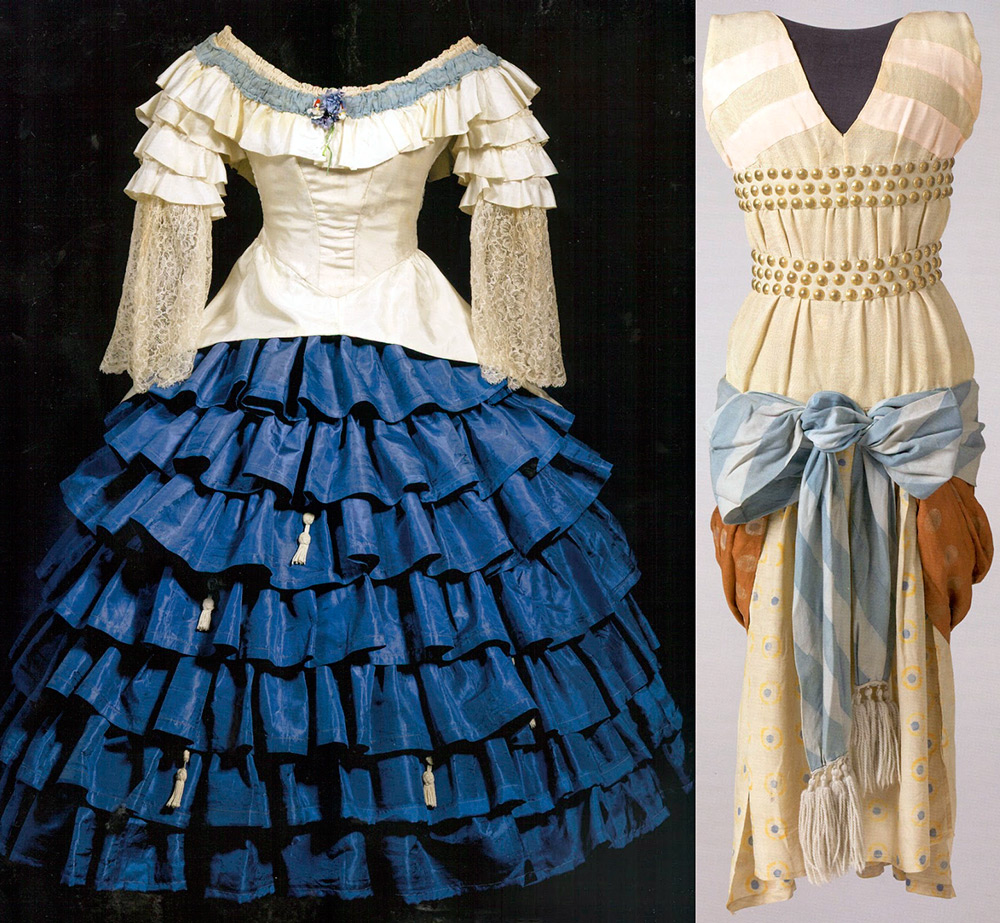
Bakst created an abstract, floral, thematic ornament, he achieved a special virtuosity in geometric. He used various methods of creating ornaments on fabric: embroidery, printing, weaving, weaving. According to Bakst's sketches, the embroidery for the performances of Ida Rubinstein was carried out by the fashion houses of Paken and Wort. In 1923, Bakst was honored to exhibit his designs for textile and tapestry ornaments at the Galliera Museum of Fashion and Costume in Paris.
Bakst was going to open his own house of theatrical costume and fashion, interior design ...
Lev Samoilovich Bakst died on December 27, 1924 in Paris from pulmonary edema.
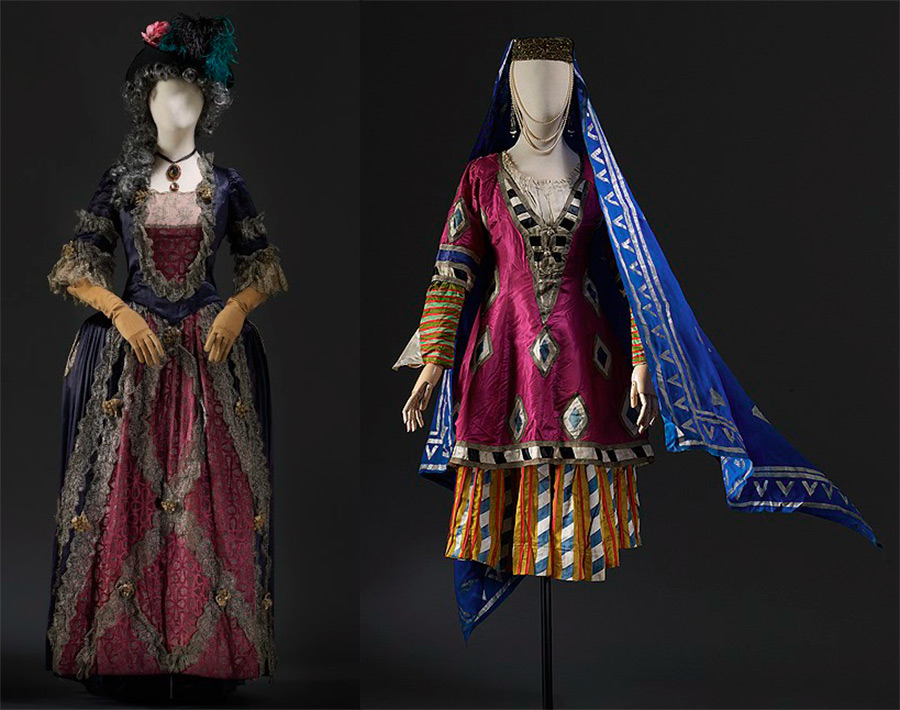
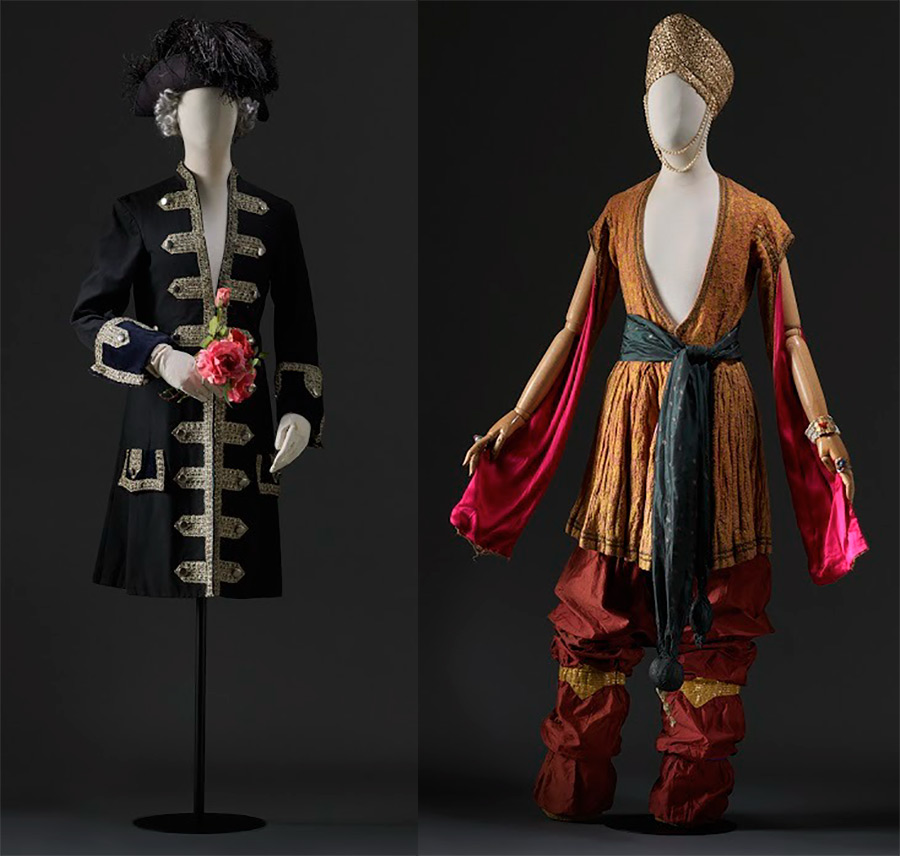
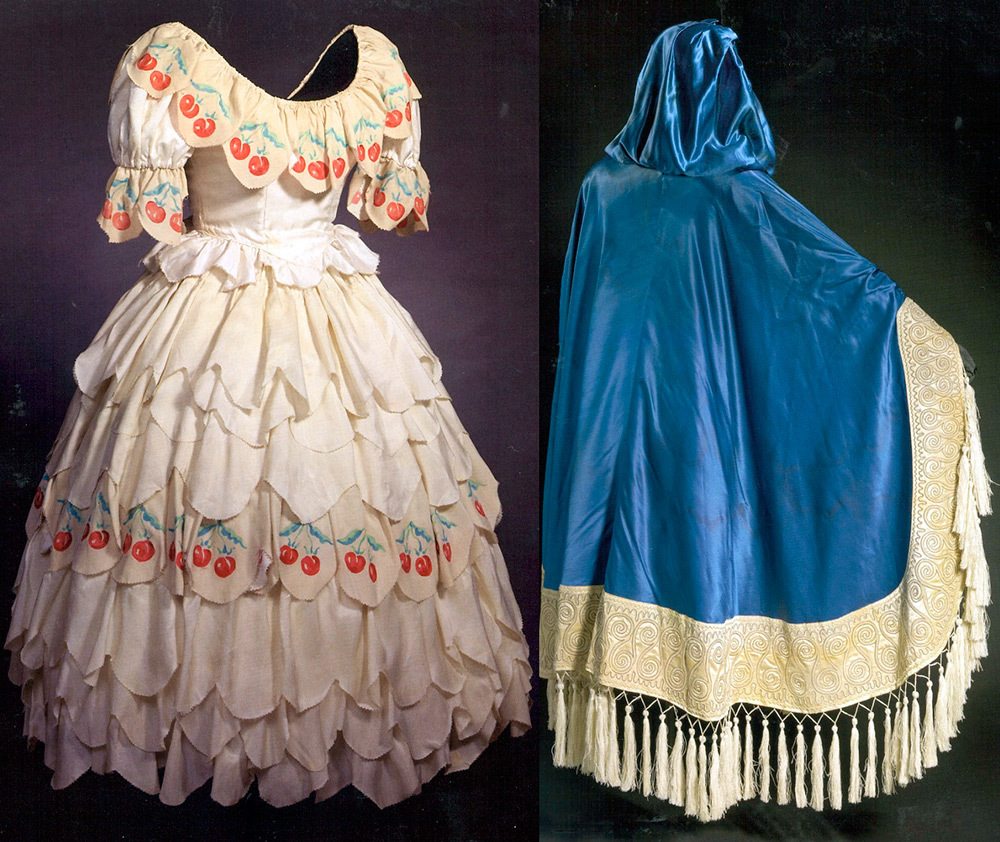
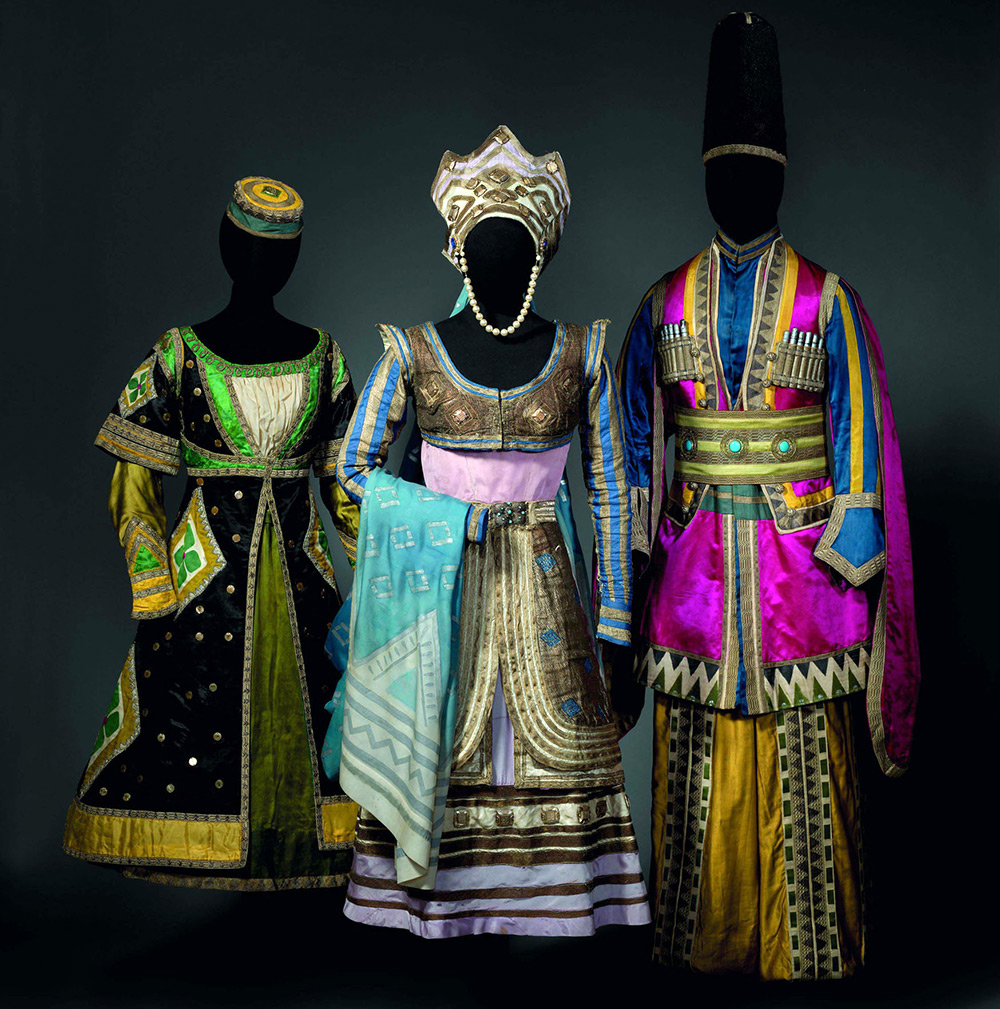
Comments and Reviews
Add a comment
Rating news
Shades of clothing that make women look younger
What shades of hair make women younger: rules and photos
Funny wedding dresses - photos and ideas
12 most expensive down jackets for the winter
How to look 25 at 40: tips from supermodels
Beautiful schoolgirls
Anti-aging haircuts and hairstyles for women
Fashionable skirts for autumn and winter
Fashionable women's trousers for the cold season
Fashionable and stylish sandals for summer 2024
Spring-summer 2024
 Fashionable dresses and tops with thin spaghetti straps
Fashionable dresses and tops with thin spaghetti straps
 Bandana tops: how to wear stylishly and beautifully
Bandana tops: how to wear stylishly and beautifully
 How to put together the perfect men's wardrobe for the summer
How to put together the perfect men's wardrobe for the summer
 Fashionable shorts for spring-summer 2024
Fashionable shorts for spring-summer 2024
 Fashionable skirts for spring-summer 2024: a guide to online shopping
Fashionable skirts for spring-summer 2024: a guide to online shopping
 The most fashionable dresses spring-summer 2024: styles and colors
The most fashionable dresses spring-summer 2024: styles and colors
 Fashionable total look 2024: ideas of images and trends
Fashionable total look 2024: ideas of images and trends
